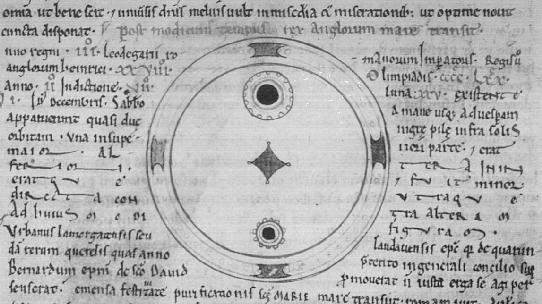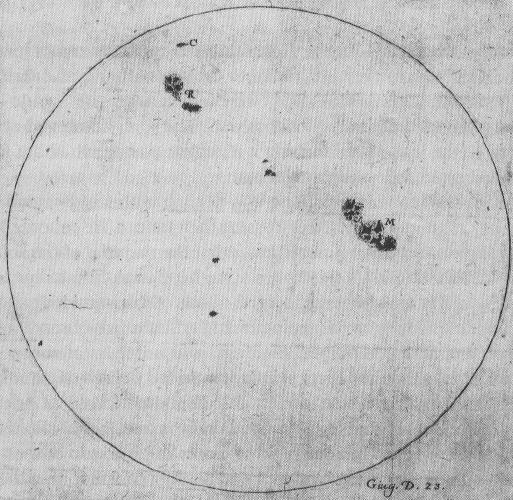
Very large sunspots can be seen on the Sun without a telescope if the Sun is behind thick fog, mist, or clouds which help reduce its brightness (DON'T TRY THIS! THE SUN IS BRIGHT ENOUGH TO BLIND YOU VERY QUICKLY). The two earliest records of a sunspot observations are found in a Chinese book, the Book of Changes, dating back to about 800BC or earlier. Much more complete Chinese records began in 165BC.

The first sunspot drawing, that still exists (reproduced above), can be found in a book called the Chronicles of John of Worcester. It was made on 8 December 1128, and shows the sunspot's umbra and penumbra. The accompanying text reads, "...from morning to evening, appeared something like two black circles within the disk of the Sun, the one in the upper part being bigger, the other in the lower part smaller. As shown on the drawing."

Galileo Galilei was one of the first people to use the telescope for astronomy. He did not make the first telescopic observations of a sunspot, but he was among the first to recognize and argue convincingly that they were a feature of the Sun.
